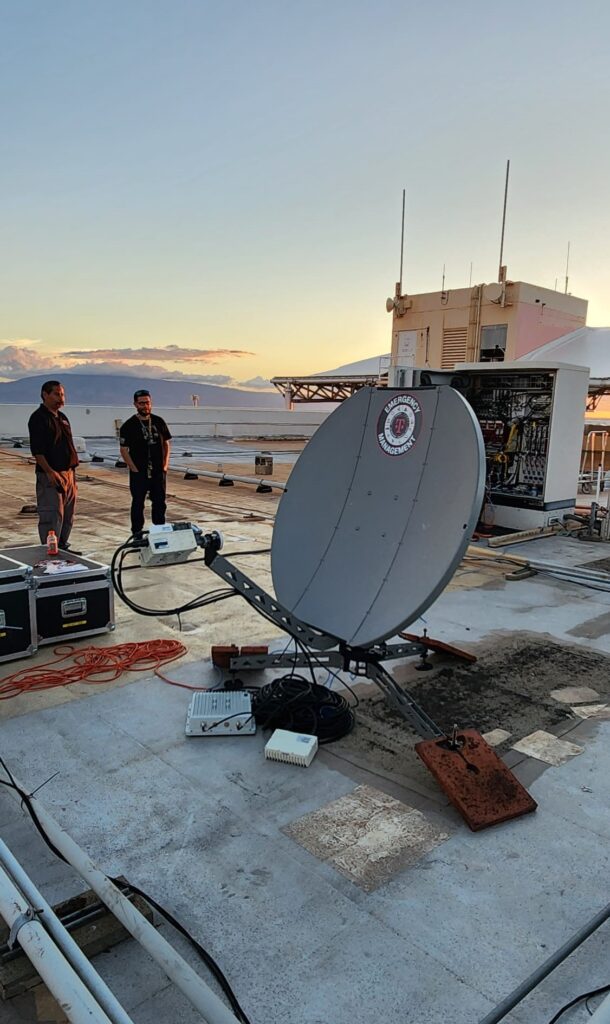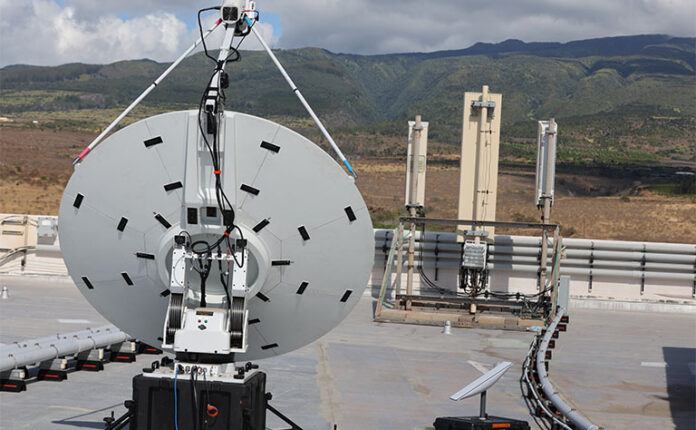Lahaina being served by temporary site solutions in the wake of wildfire damage
Of the 21 sites taken down by wildfires in Maui, all but five are back in service as of today, according to figures from the Federal Communications Commission.
The agency is tracking outages in the areas of Kapalua, Napili, Honokowai, Kaanapali, Lahaina, Launiupoko, and Olowalu in the wake of devastating wildfires that struck the Hawaiian island nine days ago. The publicly confirmed death toll stands at 111 as of Thursday morning, making the Lahaina blaze one of the deadliest wildfires in United States history—and as many as 1,000 people are still unaccounted for as teams comb through the ashes of more than 2,000 homes and businesses.
All three national operators rapidly moved in various deployable assets to the island to reestablish communications for first responders and customers, and the FCC has also granted special temporary access to some spectrum bands for backhaul, since fiber transport has in some cases been destroyed. The FCC granted T-Mobile US permission to use 6 GHz and 11 GHz spectrum for backhaul at four sites, and permission for AT&T to use that spectrum as well, at a total of 11 sites. The agency also temporarily expanded the frequencies that County of Maui responders can use for two-way radio communications.
Verizon reported on Wednesday that it has restored service to “all areas that were covered before the recent wildfires,” using satellite to backhaul voice and data traffic and a Cell on Light Truck to provide coverage in Lahaina, the epicenter of the worst damage. The carrier did warn that there could still be “inconsistent and partial restoration of network performance” as its engineers work on permanent restoration, and that it recommends avoiding data-heavy applications and using texting and calling instead.
The County of Maui has been recommending to residents that if they have connectivity, they should text rather than call.
In a Wednesday update, T-Mobile US said that its Emergency Management Team “has rapidly worked to restore every site that we have access to or that wasn’t damaged, including all sites north of Lahaina on Maui’s west coast from Kaanapali to Kapalua.” Connectivity is mostly back, with the exception of one damaged site serving Lahaina, where T-Mo has a Cell on Wheels up and running to provide coverage. T-Mobile US said that it has fully fueled backup generators in place to supplement commercial power as needed.

T-Mo also said that SpaceX has donated Starlink routers, which T-Mobile US is using to support free, high-speed Wi-Fi service at the Kapalua Airport for ticketing and ground crews, in Maluhia at housing for American Red Cross staff and volunteers, and at the Hyatt Regency Maui to support medical and mental health providers.
AT&T also has been working both to restore its network and support first responder communications; the company said that it put together a wireless public safety solution at the Kapalua Airport and an indoor solution for a Lahaina public safety agency, and that it is using one of its AT&T Drone Operations pilots on Maui to assess damage to cell sites, using a camera-equipped drone.
Cable and wireline recovery is, unsurprisingly, a slower process. Wireline service was initially reported as out for more than 25,000 subscribers in the affected areas; that has ticked down to about 16,700 in the intervening days.
The island’s public safety answering point is fully functional, but issues with a switch in Lahaina and cell sites in the area mean that some 911 still are not being completed, according to the FCC.

